Section 4 – Use of the medicine in practice
Page last updated: September 2016
Additional Information Requests
- 59 (O) Present a budget impact analysis incorporating both MBS and PBS components, with results split by sector (public, private, patient, other)
- 60 (O) Calculate an epidemiologic estimate for disease burden that is based on the prevalence of the biomarker as determined by the proposed test
- 61 (O) Estimate the cost of testing all patients eligible for the test and the cost of retesting when indeterminate or nonassessable results are produced. If testing is also required after therapy is initiated (ie to monitor therapy or to determine when therapy should cease), these costs should also be included. If relevant, provide a scenario analysis for the option of PBS listing the medicine without the proposed test as a prerequisite
- 62 (O) Estimate any other MBS costs that would be incurred if the test and medicine were listed
This section contains information requests for establishing the predicted use of codependent technologies and the financial implications to the Australian Government budget.
59 (O) Budget impact analysis incorporating both MBS and PBS components
Include in Subsections 4.1–4.6
Present a budget impact analysis incorporating both MBS and PBS components, with results split by sector (public, private, patient, other).
Present the cost of the proposed test alongside the proposed medicine in Subsection 4.2, if appropriate, and use Subsection 4.5 to present utilisation of, and costs associated with, other MBS items.
60 (O) Epidemiology estimate for disease burden
Include in Subsection 4.2
Calculate an epidemiologic estimate for disease burden that is based on the prevalence of the biomarker as determined by the proposed test.
A market-share estimate for a new biomarker scenario is likely to be inappropriate, because previous medicine utilisation will not have been targeted to this biomarker. Seek expert epidemiological advice on whether prevalence is expected to remain constant after listing.
First, estimate the number(s) of patients likely to be considered for the test (eg with the medical condition as defined). Second, based on the prevalence of the biomarker, estimate the proportion of patients likely to receive a positive test result with the proposed test (and be eligible for use of the medicine).
Where the biomarker has been validated using another test and is targeted by other reimbursed medicines, a market-share approach may be reasonable.
61 (T) Likely use and overall financial cost of the test
Include in Subsections 4.2 and 4.6
Estimate the cost of testing all patients eligible for the test (ie biomarker positive, biomarker negative and indeterminate biomarker status) and the cost of retesting when indeterminate or nonassessable results are produced. Include these costs if testing is also required after therapy is initiated (ie to monitor therapy or to determine when therapy should cease).
Any uncertainty about use of the test (ie biomarker prevalence) or changing availability of the test should be explored in Subsection 4.6. There may be ‘leakage’ issues identified through an assessment of the ‘change in management’ part of the linked evidence. A codependent technology is meant to target the use of a medicine to a patient who is biomarker positive, but, in some cases, the medicine is given even if the patient is negative for the biomarker. Similarly, a test may be done to rule out use of a medicine (eg to avoid potential medicine‐related adverse events or the development of resistance), but the medicine is given anyway.
62 (O) Other MBS costs
Include in Subsection 4.5
Estimate any other MBS costs that would be incurred if the test and medicine were listed. Consider procedures for administration of the medicine and consultations for adverse events, consultations for resampling, genetic counselling and so on.


